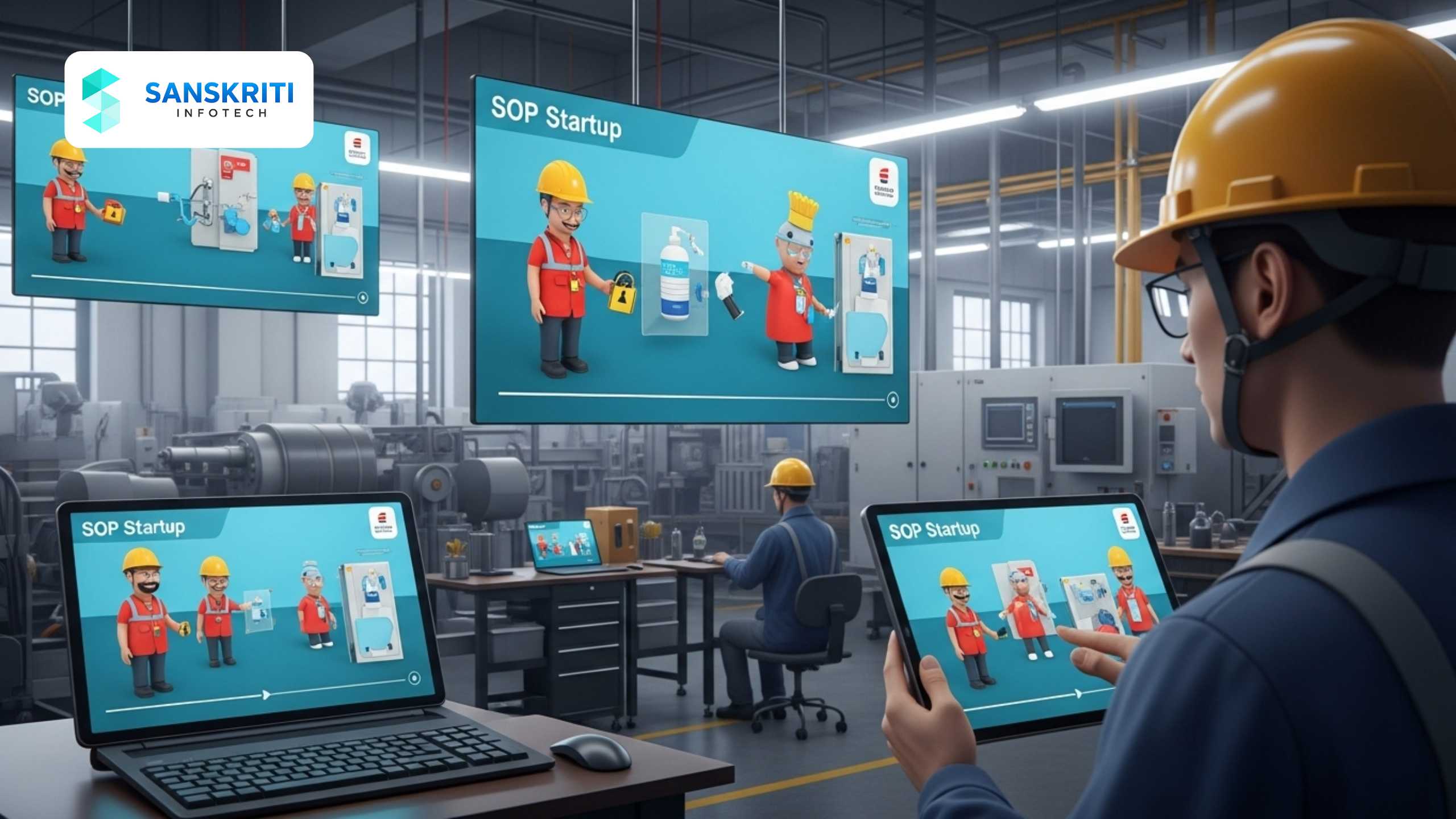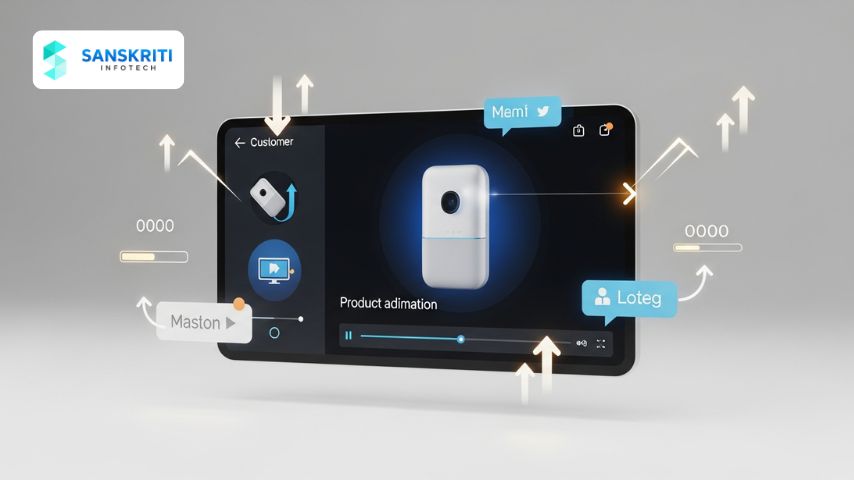Table of Contents
Introduction
Occupational safety training is a non-negotiable in high-risk environments like manufacturing, oil & gas, pharmaceuticals, and construction. Yet, even with stringent regulations and company-specific protocols, many employees forget, ignore, or misunderstand critical safety procedures. The culprit? Static training formats that fail to engage modern learners.
Animated Standard Operating Procedures (SOPs) are rapidly changing this landscape. By transforming dense, text-heavy manuals into visually engaging explainer videos, animated SOPs enhance understanding, memory retention, and compliance like never before.
This blog explores how animated SOPs are revolutionizing occupational safety training, why they outperform traditional methods, and how your organization can benefit from implementing them.
The Limitations of Traditional Safety Training
Despite good intentions, conventional safety training methods often fall short. Common formats include:
- Text-based SOP documents or PDFs
- Slide presentations with bullet points
- Classroom-style lectures with limited visuals
- Generic eLearning modules with stock footage
These approaches are outdated for several reasons:
- They assume literacy and language proficiency
- They encourage passive learning
- They rarely simulate real-world site conditions
- They’re hard to remember under pressure
According to NIOSH – Training Through Technology, traditional training can lead to as low as 15% retention of safety procedures.
What Are Animated SOPs?
Animated SOPs are short, dynamic video modules that visually explain step-by-step safety procedures using:
- 3D models of your equipment and facility
- Realistic scenarios to illustrate hazards and best practices
- Narration and subtitles for clarity across diverse workforces
- Visual cues like arrows, highlights, and warnings
These animations simulate real situations employees face, enabling them to absorb procedures quickly and recall them effectively when it matters most.
Why Animated SOPs Work Better
A. Visual Learning Increases Retention
Visual learners make up 65% of the population. With animated SOPs, workers don’t just read about safety—they see it in action.
B. Procedural Clarity
Animations show exact sequences, timing, and conditional steps. This is critical in industries where even a small deviation can result in serious consequences.
C. Scenario-Based Engagement
Showing real-world outcomes of compliance vs. non-compliance helps build behavior-based safety awareness.
D. Multi-Language Support
Narrations and subtitles make training accessible to employees with different native languages or literacy levels.
E. Microlearning Format
Short animated videos are easier to digest and perfect for mobile learning platforms.
Key Applications Across Industries
Animated SOPs are transforming safety training across various sectors:
Manufacturing
- Lockout/Tagout (LOTO) procedures
- Equipment startup/shutdown
- Handling of hazardous materials
Oil & Gas
- Permit-to-work (PTW) process
- Confined space entry
- Emergency shutdown systems
Construction
- Working at height protocols
- Use of heavy machinery
- Scaffold assembly/disassembly
Pharmaceuticals & Chemicals
- Contamination control
- Cleanroom entry/exit
- Chemical storage and handling
These visuals empower employees to follow procedures exactly as intended, reducing room for error.
The ROI of Animated SOPs
Organizations investing in animated SOPs are seeing measurable benefits:
- Faster onboarding: Reduce training time by up to 60%
- Fewer incidents: 30–50% fewer safety-related violations
- Improved compliance: Standardized visuals ensure alignment with OSHA Safety and Health Topics and ISO standards
- Lower costs: Minimize re-training and supervisor-led refreshers
Refer to Safeopedia – SOP Definition and Best Practices for insights on how SOP structure impacts operational efficiency.
Creating Effective Animated SOPs
To create animated SOPs that resonate, follow these best practices:
- Use actual site data: Floor plans, machines, tools, and risk zones
- Script real-world incidents: Include “what if” moments to show consequences
- Keep it short: 2–4 minutes per procedure
- Visualize every step: Arrows, labels, and cutaway views enhance clarity
- Add assessments: Embed quizzes or checkpoints in your LMS
Partnering with studios like Sanskriti Infotech ensures technical accuracy, branding consistency, and industry alignment.
Real-World Results
Chemical Plant in India
After implementing animated SOPs for PPE, storage, and handling of flammables, the plant saw:
- 40% decrease in safety violations during internal audits
- 20% faster training completion for new hires
Middle-East Oil Company
Animated PTW and Emergency Evacuation SOPs:
- Reduced language-related misunderstandings
- Improved contractor compliance
Conclusion
In an era where workplace safety can’t be left to chance, animated SOPs offer a proactive and powerful solution. They combine the clarity of video with the depth of procedure—ensuring that employees learn not just what to do, but why it matters.
If you’re looking to modernize occupational safety training and boost workforce readiness, 3D-animated SOPs are the future. Read more insights on this topic at EHS Today – Modernizing Safety Training.






